

Talking Heads: Burn rate to blast off
As the alt protein market matures, capital is no longer chasing headlines – it’s chasing fundamentals. Emma Clarkson speaks with 11 leading investors about what’s driving decisions in today’s post-hype funding landscape, and what it now takes to earn a ‘yes’
We all know the story by now. Investments in alternative protein have plummeted since 2023. A passing trend. The bubble has burst. Ad infinitum. Except…
Except, let’s address the nuance and consider the full, complex situation here. The industry is undergoing a shakeout. Valuations are down, hindered by slower-than-expected scaling and consumer adoption. Investors are favoring internal rounds and bridge financing over the colossal raises of 2018 to 2021.
Since then, we’ve sadly lost a number of innovators to the fallout. But alt protein is a still-nascent industry, let’s not forget – one that is beginning to mature and recalibrate. And while overall funding has slowed compared to the pre-2022 era of low interest rates, private capital continues to flow and, meanwhile, new, high-potential product categories are beginning to emerge.
Pushback and progress
Furthermore, the past 12 months have seen myriad legal challenges, throwing regulatory turbulence into the mix. The US states of Florida, Alabama, Mississippi, Indiana, South Dakota, Ohio, and Nebraska have either introduced bans or attempted to ban cultivated meat, and a smattering of EU countries have done or attempted the same (Italy, France, Hungary, Romania).
On the flipside, some governments are doubling down and increasing support for alternative proteins. Countries such as Singapore, Denmark and Israel have made significant public investments in alt protein R&D and commercialization.
The resulting, ongoing shift in investment dynamics reflects both caution in the VC landscape and growing confidence in certain technologies. There’s an increased attraction towards enabling technologies, with a growing interest in biomass fermentation and molecular farming, perceived as more scalable in the near term compared to some novel methods. Fermentation, particularly precision fermentation, continues to attract interest, while solid-state fermentation and novel fungi strains are expanding the mycoprotein market.
What we’re seeing is a shift toward greater realism. Above all, VCs are demanding sharper fundamentals: strong unit economics, a clear path to scale, and credible timelines to profitability. High CapEx platforms such as cultivated meat, for instance, are under tighter scrutiny.
Crucially, let’s not lose sight of the bigger picture. The Good Food Institute reports that global meat consumption could rise by at least 50% by 2050 from 2012 levels. Given that the environmental impact of that is unthinkable, there’s simply no alternative but to push ahead with alternatives.
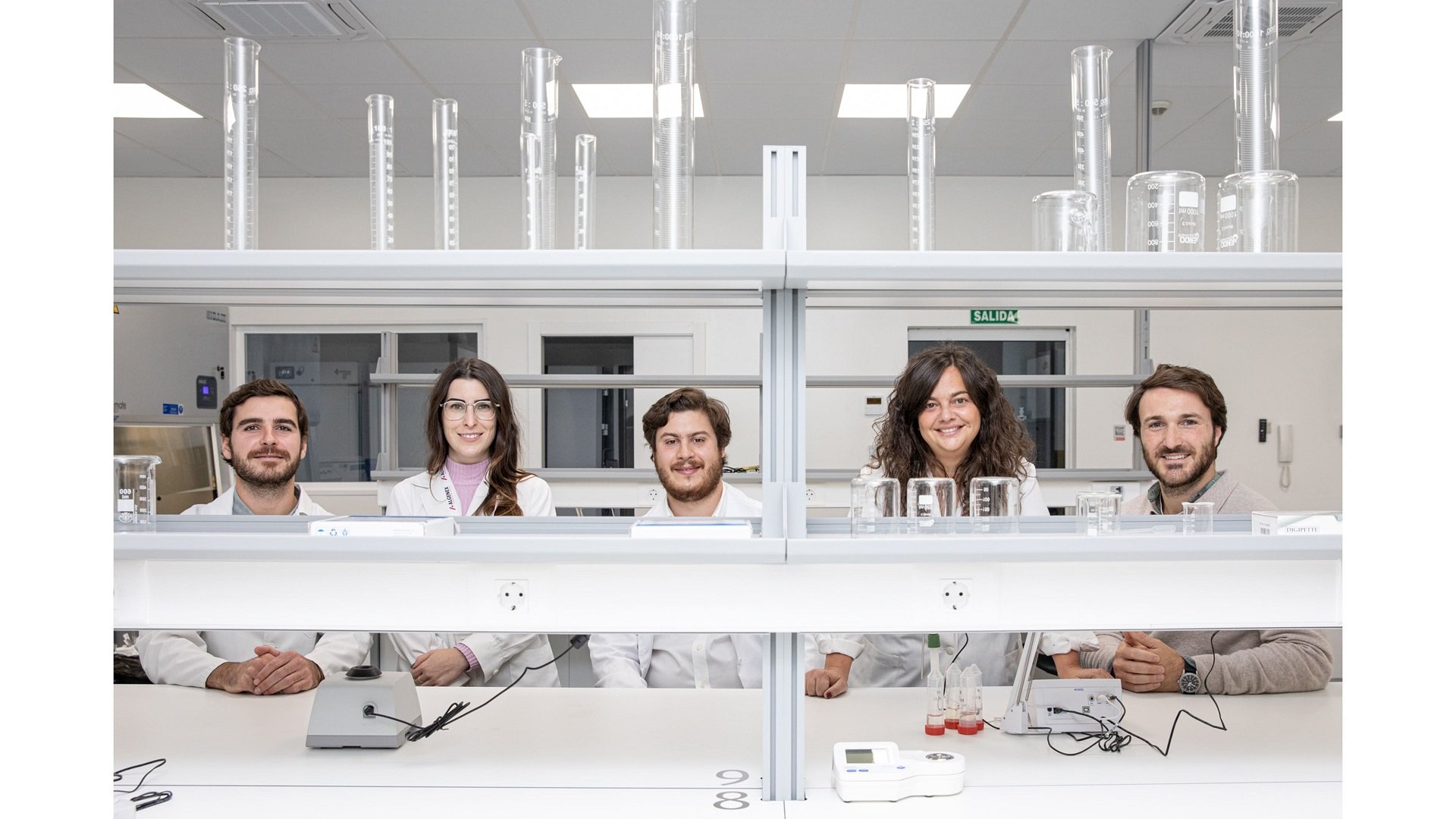
Edible Planet Ventures
Sharon Cittone, Founder & CEO of Edible Planet Ventures, has spent almost a decade leading the global food and agtech ecosystem, earning recognition from Forbes as one of the most powerful women shaping the future of food. “We’re in a critical reset phase,” she feels. “The initial hype has subsided, revealing a more pragmatic landscape. There’s still immense potential, but the focus has shifted from ‘disruption’ to ‘delivery’. Companies are now judged not just on vision, but on execution – technical, commercial, and cultural. We’re moving from Alternative Protein 1.0, where novelty led, to 2.0, which is rooted in science, consumer insight, and operational resilience.”
.jpg)
Reflecting on missteps during the hype peak, Cittone points to the narrative as the most damaging. “We completely botched it. Framing animal farming as the enemy and making people feel guilty for eating meat created a polarizing dynamic that alienated both consumers and producers. That backfired – and we’re seeing the fallout, from backlash to cultivated meat bans. Instead of building bridges, the messaging built walls.”
In the wake of this backlash, and with lessons learned, Cittone says the current opportunity is to shift toward an inclusive, solutions-oriented narrative. “Alternative proteins shouldn’t be framed as a replacement, but as an addition – a way to diversify diets, enhance food security, and support farmers through transition. We need to engage with the agricultural community and show that these technologies can complement traditional practices, offering new revenue streams and resilience. It’s time to treat alt proteins not just as tech, but as food – food that respects culture, builds trust, and meets real-world needs.”
Tech built for real-world impact
As necessity drives innovation, VC interest is growing around scalable, real-world solutions, says Cittone. “There’s still appetite – especially for enabling tech such as precision fermentation, ingredient platforms, and B2B models. There’s also renewed interest in solutions that benefit climate, health, and food security.
“Precision fermentation remains a game-changer, though cost and scale are still major hurdles,” she adds. “What’s exciting now is its convergence with AI. Just recently, MOA Foodtech launched Albatros to cut development timelines and better use byproducts. Supply chain innovation – especially regional manufacturing and ingredient sourcing – is also key to making products affordable.”
Bringing a global perspective, Cittone explains how national strategies in places like Singapore, the Netherlands, and the USA shape what gets funded and built. “Policy is now a key driver of innovation. Singapore leads with a cohesive approach – public funding, streamlined regulation, and infrastructure investment make it a true testbed for alternative proteins. The Netherlands remains a powerhouse, especially in fermentation and hybrid products, supported by academic-industry collaboration and public-private partnerships. The UK is also gaining ground, with growing government support for biotech and food innovation.
“The USA, however, is a different story. It’s losing momentum. While private sector innovation and some state-level work remain strong, federal policymakers are not aligned with the industry. Regulatory uncertainty and politicization are creating headwinds just when stable support is most needed. Without federal alignment, the USA risks falling behind as other nations push forward with clearer strategies and stronger collaboration.”
We’ve moved past hype and into a more honest, collaborative phase – one that’s rooted in impact, systems thinking, and long-term resilience
Poignantly, Cittone adds, “Where governments act as facilitators, ecosystems thrive.”
Beyond collaboration and government support, what’s needed to accelerate alt protein adoption is a focus on affordable, functional ingredients that boost taste and nutrition without raising costs.
“If we can crack flavor, texture, and performance while keeping margins realistic, adoption will follow – especially in hybrid and B2B formats,” Cittone suggests. “Tech is the enabler, but affordability and quality are the unlock.”
The correction phase, she adds, brings hope. “We’ve moved past the hype into a more honest, collaborative phase – rooted in impact, systems thinking, and resilience. The convergence of food, climate, and health is no longer theoretical – it’s here. And the next generation of founders, investors, and chefs are more mission-aligned than ever.”
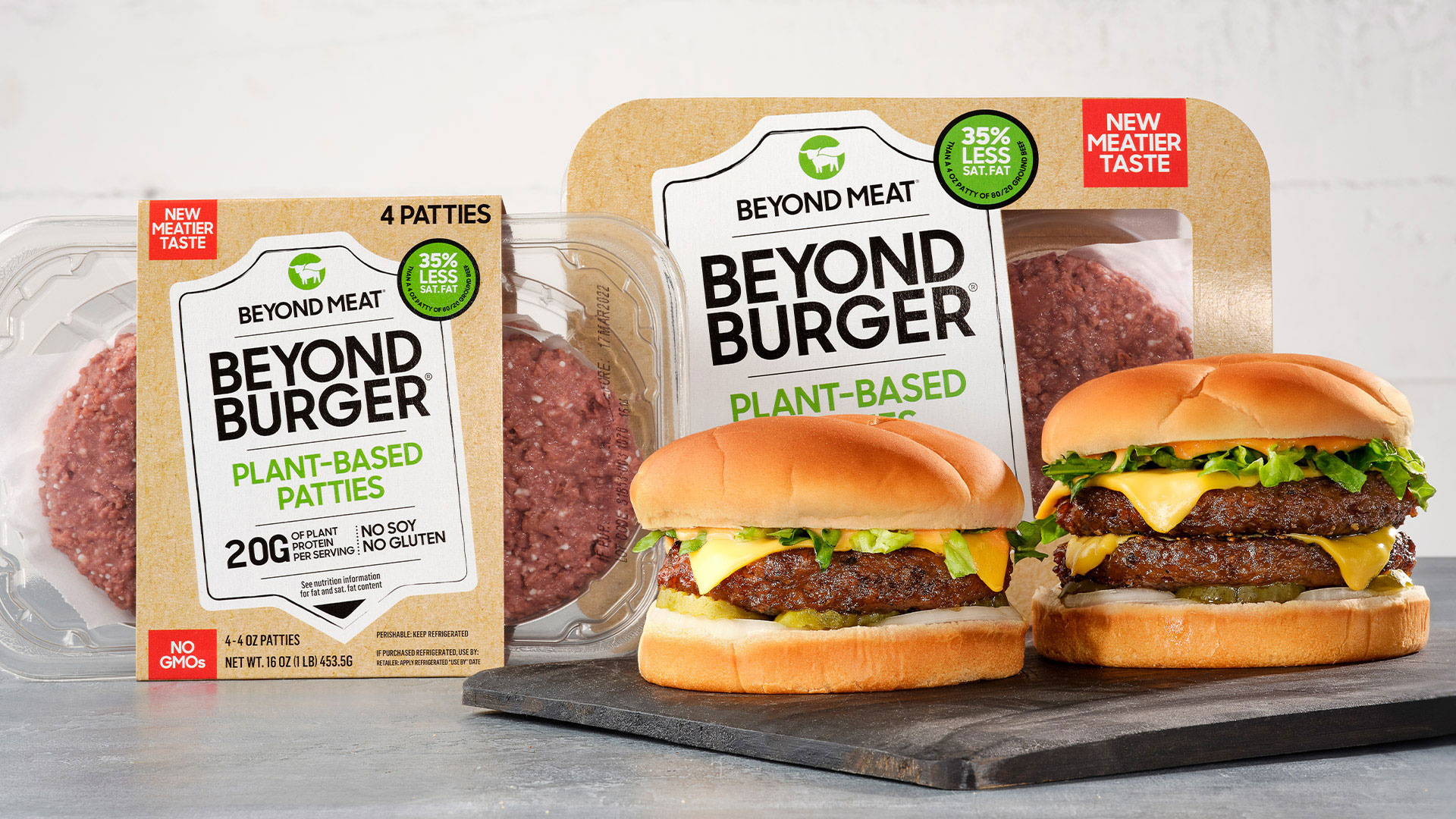
Flora VC
As Managing Partner at Tel Aviv’s FLORA VC, Gil Horsky is on a mission to transform the agrifood industry. He’s also seen firsthand how investor sentiment has shifted following the alt protein boom.
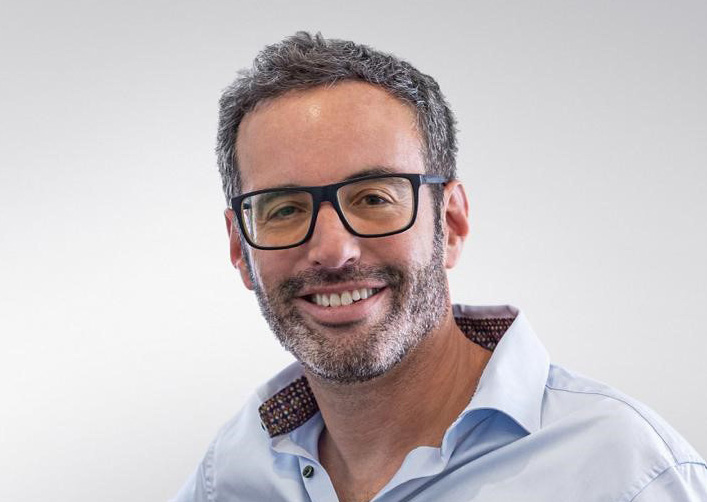
“There was a kind of hangover after the hype cycle that peaked between 2019 and 2022–2023,” he explains. “We saw an explosion of interest in food and agtech: new funds, major capital inflows, lots of generalist investors entering the space, and incredible entrepreneurs launching ventures.
“But the issue was that many of those investors – and sometimes even the entrepreneurs – were treating food and agtech like any high-growth sector, expecting startups to scale as fast as fintech, cybersecurity, or consumer apps. The reality is very different.
“Food and agriculture are complex. You’re often dealing with biotech, CapEx-heavy models, long development cycles, regulatory hurdles, and even clinical trials. In agtech, you might need to wait an entire season just to test a new innovation!”
This hangover period, combined with the sector’s complexity, has shifted capital flows. Horsky notes which areas are gaining and losing investor interest. “Until recently, a lot of interest – and rightly so – was focused on deep tech and biotech companies. That interest still exists. We continue to back ventures in those areas because there’s real innovation happening.
“But we’re also seeing a shift. With the rapid advancements in AI and other technologies, people are starting to realize that food and agriculture – one of the top 10 biggest industries in the world, worth around US$8 trillion end-to-end by some estimates – is still massively under-digitized. A well-known McKinsey study from a few years ago ranked major industries by their level of digitization, and food and agriculture came in last.
“That means there’s a huge opportunity to bring proven technologies – AI, Big Data, IoT, automation, process optimization – into this space. These tools are widely used in other sectors, but much of the food and ag value chain remains stuck in outdated systems. So now we’re seeing a lot more investor attention going toward digitizing this industry and modernizing everything from supply chains to procurement.”
Course correction needed in plant-based
On the flipside, Horsky notes, investors are quietly backing away from certain sectors, and there’s no avoiding the fact that plant-based and cell-based have taken a sizeable hit. He believes there are several reasons why. “First, a lot of money flooded into the space. There was a boom in funding, which led to a proliferation of companies all trying to do similar things – replace milk, meat, eggs, and so on. For investors, it became very difficult to differentiate between them. And then we saw public market performance fall short of expectations. So that whole segment has taken a serious blow. It will need to evolve. The category still holds promise, but the products have to meet consumer expectations around taste, texture, and – most critically – price. Until they do, it’s going to be hard to regain momentum.”
What we need now are new examples – startups that scale, succeed, and show the world what the future of food tech can really look like
Still, there’s cause to remain optimistic, Horsky believes, as the need for innovation is only growing. He hypothesizes that the current challenges will ultimately make the ecosystem stronger. “Startups will be leaner, more focused, and more efficient. Technological advancements are also making it possible to do more with less, which is a huge advantage in today’s investment environment.
“What gives me the most hope, though, is the potential for a few breakout success stories. If we can see some exciting exits, unicorns, or successful IPOs in the next few years, it could re-energize the whole space.”
Imperative at this stage, Horsky stresses, is the emergence of new case studies – companies we can all point to as proof of what’s possible.
“A few years ago, we had the big buzz around plant-based and alternative proteins, with Beyond Meat as the headline success. But that moment has passed, and that story isn’t as bright today. What we need now are new examples – startups that scale, succeed, and show the world what the future of food tech can really look like.”

Barclays
As Managing Director and Global Head of Venture Capital Banking at Barclays, Matt Spence offers a distinct perspective on later-stage financing, scaling, and the broader implications of how we feed the world.

“Investors today are much more focused on unit economics – especially for alternative protein companies that have started to scale,” Spence says.“It’s no longer just about the tech or product. It’s about how you’ll make money, step by step. There’s also greater scrutiny of capital requirements. These companies often face major CapEx needs – large bioreactors, complex facilities – which makes things even tougher in today’s environment.”
In addition to the myriad challenges that companies face in 2025, there are unique hurdles for those in the alt protein game. “Alternative protein companies are trying to do three incredibly difficult things – any one of which would be challenging for a startup in any sector. First, they have to deliver breakthrough technology. You need a product that tastes as good as animal-based food, and increasingly, consumers want it to be as healthy as a head of lettuce or a piece of kale. That’s a huge technical leap, with real potential for patentable, science fiction-level innovation.
“Second, there’s the consumer branding challenge. Take Beyond Meat, for example – it’s a recognizable brand. But breaking into retail, winning shelf space, and competing on SKUs is a major consumer branding play. It’s tough even for companies outside the food sector.
“Third, you’ve got to manufacture at scale, cost-effectively. That’s a major hurdle. With tech like cultivated meat or precision fermentation, companies are often using pharmaceutical-grade bioreactors, designed to meet standards for injecting into your bloodstream, not putting into your stomach. They’re inherently over-engineered and costly.”
Exit headwinds
The exit landscape has evolved significantly since the blockbuster IPOs of just a few short years ago. With that in mind, what might be the most viable exit path for operating companies today? “There is not a robust exit market right now,” he asserts.
“So, I won’t sugarcoat it – the IPO and M&A environments are very challenging at the moment for alternative proteins. For the IPO market to rebound, we’ll need to see broader activity and success across more sectors. Once that momentum builds, companies in alternative proteins may have a better shot.
“That said, I don’t want to sound overly pessimistic. Another way to look at it is this: alternative proteins are currently in their own version of the ‘valley of death’. They’ve had massive amounts of venture funding and some genuinely historic milestones, like in 2023, when GOOD Meat and UPSIDE Foods became the first companies in the USA to receive FDA and USDA approval to sell cultivated meat. That was a huge achievement.
Alternative protein companies are trying to do three incredibly difficult things – any one of which would be challenging for a startup in any sector
“But what we’ve come to realize is that regulatory approval alone wasn’t enough. The unit economics are still a hurdle. And we’re stuck in a classic chicken-and-egg scenario: you can’t significantly scale until costs come down, and you can’t bring costs down until you scale.”
For companies that are able to escape this loop, might there be a not-too-distant world in which the public markets warm up again to alt proteins? Spence puts forward which signals we should look out for. “I’d be watching for signs that the cost of fermentation or cultivated meat production is dropping, or that plant-based products are becoming more appealing to mainstream consumers. Those are the inflection points that could lead to renewed investor excitement – and potentially open the IPO door again.
“That said, it’s hard to predict exactly when public markets will re-engage. It depends on broader macro trends, too. But I will say this: for those who are already invested in the space, the focus should be on helping these companies survive and thrive – on pushing down production costs and building real, scalable businesses. That’s what will ultimately make the sector more compelling again for the public markets.”

Synthesis Capital
Steve Molino has closely watched the funding landscape shift from boom to a more balanced environment. Now an investor at London–based Synthesis Capital, he’s tracking how alternative protein startups are adapting to leaner times and finding smarter, more strategic ways to fuel growth.

“It’s clear founders are becoming more resourceful in financing their companies. Pre-2022, venture capital was abundant and less dilutive due to inflated valuations, so there was little need to look elsewhere,” he says.
“With today’s more rational market, founders are turning to new funding sources – non-dilutive government grants, equipment financing, and strategic partnerships to manage CapEx. These alternatives are growing and helping the sector mature.”
To stand out, Molino says, startups must show commercial viability and traction. “The days of raising through Series A based solely on tech and R&D are gone. What stands out now are companies that clearly understand the food system pain points they’re solving – and what customers are willing to pay for.
“For pre-revenue, early-stage companies, that may mean speaking with prospective customers to understand their willingness to pay, price sensitivity, requirements around the product or service, etc, and even obtaining LOIs, MOUs, or offtakes (in a perfect world).
“For companies that are selling in the market, it’s important to illustrate strong demand, unit economics that will ultimately lead to profitability, and meaningful opportunities for growth. There are many companies with amazing tech out there, but illustrating this tech is truly solving a problem for players in the food system today – and that customers are willing to pay for it – that’s something obvious but often overlooked.”
Fermentation leads as low-risk innovation
In terms of the alternative protein technologies and categories that are most attractive to investors in the current climate, while there are various interesting investment opportunities right now, enabling technologies within fermentation continue to be the most attractive to investors. Molino explains why. “For one, fermentation as a technology has been well-researched and proven at scale in other industries, so this vertical is de-risked compared to some newer approaches and technologies in alternative proteins.
“Also, focusing on the picks and shovels within a growing industry – whether these solutions be through hardware, software, or a combination of both – allows companies to address critical pain points industry-wide. Finally, enabling technologies in fermentation are not only applicable to companies in alternative proteins, but also to other players in food and beverage, pharmaceuticals, biotechnology and industrial biomanufacturing, and more. This allows B2B enabling tech companies in the space to increase their total addressable market and also be attractive investment opportunities for investors outside of the alternative protein landscape, alone.
We have to find opportunities that do not rely on mass adoption for profitability to occur
“We have seen this at Synthesis through our investments in companies like Pow.Bio, Culture Biosciences, and Triplebar, and we anticipate finding new opportunities to address key pain points in fermentation as the landscape evolves.”
Assessing the timeline for mass adoption and profitability, Molino’s approach is pragmatic. “The food system is large and complex, and the masses are unlikely to shift in a five- to 10-year timeframe, a typical hold period for a venture capital investment.
“Therefore, we look for opportunities to invest in companies addressing critical pain points in the food system today – ones that can create meaningful businesses, while helping to transform the system into one that is sustainable and fit-for-purpose. These companies are solving important problems in the food system necessary on this journey to widespread adoption of sustainable foods, but do not require such adoption to create near-term financial returns and impact.
“As investors with specific time horizons, we have to find opportunities that do not rely on mass adoption for profitability. The ultimate goal is for alternative proteins to no longer be considered ‘alternative’ and for the masses to have sustainable food options become a meaningful portion of their diet.”
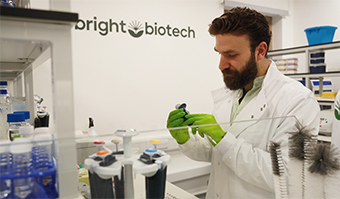
Big Ideas Ventures
As Senior Director of Acceleration at Big Ideas Ventures, with locations in Singapore, Paris, and New York, Caroline Mak brings a global view of the investment landscape. “Given the macro-economic climate and the uncertainties facing food-tech startups, I’m still surprised when founders pitch value propositions without solid research or real technical or market validation. The days of raising on far-flung ideas with no clear use case are over. We need ambitious but scalable solutions to real-world problems.
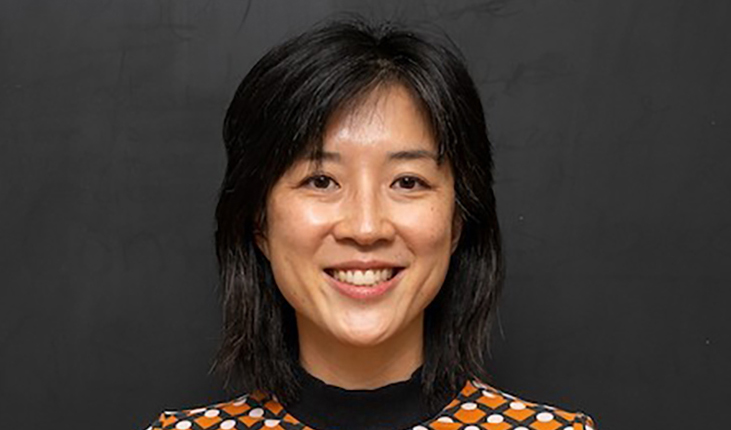
“Another common misconception is thinking your startup must do it all. We’re not asking pre-seed companies to pick a lane forever – but we haven’t seen a startup succeed at being both a consumer brand and deep-tech platform. Founders have limited time and bandwidth, so choose your path and build the right team to support it.”
Mak also highlights key regional differences in startup quality, investor readiness, and ecosystem strength. “Global leadership has shifted, and certain regions are emerging. Singapore remains strong with regulatory advantages and a history as a hub. We’re also seeing promising developments in Asia – South Korea, for instance, recently launched its first government-supported center for cell-cultured foods and is advancing regulatory pathways.
“Other regions we are excited about seeing a more maturing ecosystem include the Middle East,” Mak continues. “The region’s focus on food security and on sustainable food production – combined with a growing and increasingly savvy market – means we expect to see substantial growth in innovation and investor-ready startups over the coming years.”
Building lean to last
Early-stage alt-protein startups navigating today’s challenging fundraising climate must employ careful survival tactics. The fundraising environment for early-stage alt protein startups has become far more selective, but it’s also forcing founders to build smarter, leaner, and more resilient companies. Mak believes this is a great thing and outlines five tactics that have worked well for those still gaining traction despite the headwinds.
“Firstly, being focused on commercial validation. The startups that are still getting funded are the ones that have found repeatable and scalable pathways to revenue, even at a small scale. Whether it’s landing an LOI with a strategic, or initiating a B2B pilot, we want to see founders prioritize proof over shiny decks and promises that can’t be fulfilled.
Gone are the days when founders could pitch on the strength of a far-flung idea. We need solutions – ambitious ones – for real-world problems that are scalable
“Secondly, differentiate between platform and product. Many alt protein startups used to pitch a ‘platform’ from day one. It’s interesting to see that now leading with a strong product can be more valuable – a single application or channel that gets them to market faster, and building toward a platform once the unit economics and demand signals are clear.
“Thirdly, leverage non-dilutive capital: explore and stay open to stacking grant funding, accelerator support, and strategic R&D partnerships. In regions such as the EU, where government-backed innovation funding is strong, we’ve seen high-performing portfolio companies extend their runway by hitting technical milestones with non-dilutive capital – then raising equity from a stronger position.
“Next, reduce the burn! Keep your team lean, outsource where possible, and avoid long CapEx cycles until milestones justify it. Founders with this mindset from the start have been more resilient than those burdened with oversized teams and overly ambitious travel and marketing budgets.
“Finally, stay honest with your investors. We have heard a lot of ‘change the world’ storytelling over the years, and we’ve noticed a shift to more grounded, problem-first narratives. The founders who speak honestly about technical challenges and regulatory timelines – while also being honest with their investors and partners about the cost hurdles they face – are able to build better relationships with their investors.”
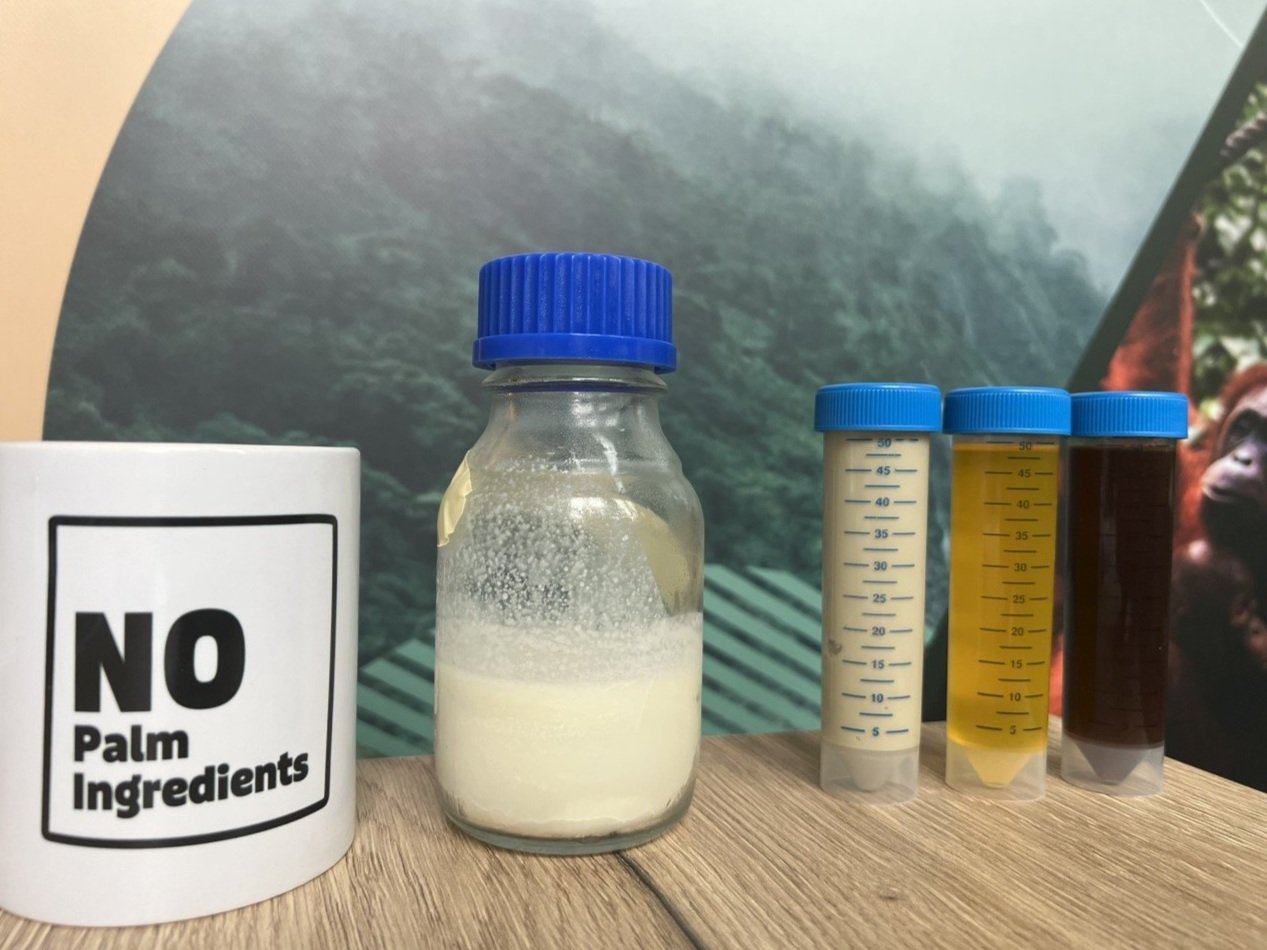
Icos Capital
Nityen Lal, Managing Director of Netherlands-based ICOS Capital, has much to say on the so-called ‘valley of death’ – that notorious transition from Seed to Series A. For him, the difference between a startup and a scaleup isn’t abstract – it’s measurable.
“We typically look for three key things.First, production scale: they should already be producing in meaningful volumes, typically measured in tons. If they haven’t reached that level, they’re not at scaleup stage yet.

“Second, commercial traction: they should have at least a few launching customers who are either already buying or have shown strong intent to integrate the product or ingredient into their supply chain. We’re looking for real market engagement, not just interest.
“Third, team and sales pipeline: there needs to be a capable team in place, particularly on the commercial side, and a solid sales pipeline that shows potential for sustained revenue generation.”
No traction, no ticket
For startups eyeing future funding rounds, Lal advises strongly against approaching Series A investors without solid foundations in place. “Launching customers with real commitments, proven production volumes – say 10 to 20 tons – and serious, ongoing talks with corporates looking to integrate my product. Without those, it’s premature,” says Lal.
“Right now, we’re seeing a lot of biotech-style Series A pitches –companies saying, ‘We’ve developed the product, there’s interest, now we need funding to build a factory’. That factory might cost US$25 million. Maybe the EIC funds half, but they still need to raise the rest from private investors. We hear this often, but the problem goes deeper than just the fundraising.
“The real challenge is product integration – getting your ingredient or technology adopted by food companies. These companies are bombarded with options. They’ve sampled everything. If you approach a major retailer or dairy brand, they might say, ‘Yes, we’ve tried your product. Come back with more samples when you’ve scaled.’ But ask, ‘Will you commit?’ and the answer is usually ‘No’.
Scalable production, committed customers, and a sales-ready team. Those are the three main indicators we use to determine whether a company is ready to move from startup to scaleup
“Founders need to understand how their customers think. Take yogurt. If a consumer is used to a certain taste, the last thing they want is a sudden change – it could drive them away. Then there’s price. The dairy aisle is brutally competitive. Products are priced to the cent. Consumers might see a label that says 15% more protein or 30% more calcium, but that doesn’t mean they’ll pay more. Most won’t.
“Retailers and food producers know this. They’re cautious. They won’t raise prices unless they’re confident consumers will accept it. And they won’t reformulate a bestseller based on a promise – they want certainty. That’s why change in the food industry is slow. Most people stick to what they know. Yes, younger generations are more open to new products, but the shift is gradual. Relying too heavily on potential instead of traction – without real customer commitments – and assuming ‘if we build it, they will come’, is risky. The food industry simply doesn’t work that way.”
Lal shares his perspective on what separates companies that merely survive from those that thrive after Series A. “It comes down to market traction – and that starts with a cost-competitive, high-quality product. You can have the most innovative technology, but if your product isn’t competitive on cost or doesn’t meet quality expectations, you won’t scale.
“What we’ve heard clearly is that CPG companies aren’t yet willing to pass price increases to consumers. That’s the reality. So, unless your product offers something truly unique, cost competitiveness is critical.
“Some startups claim to have a ‘super protein’ – with better emulsification, solubility, or nutritional benefits. But the truth is, every protein startup says that. There isn’t one I’ve spoken with that doesn’t claim some superior functionality or another. What was once a differentiator is now just baseline.”

Siddhi Capital
Steven Finn, Co-Founder & General Partner at Siddhi Capital, seems cautiously optimistic for the future, and offers practicable, attainable advice for founders. “What keeps me excited is that food is such a massive market. It’s constantly evolving, and yet in some ways it moves incredibly slowly. So, when the right opportunity comes along, it can really break through what might otherwise look like a flat landscape. But that ‘flat’ market? It’s worth trillions of dollars, and it touches everyone on the planet, multiple times a day.
“It’s those underlying shifts – those moments of real change – that keep me engaged and optimistic about what’s possible. I think there’s a huge opportunity in creating products that are truly approachable to the mass market – but it’s one that’s not being seized enough.”

To be capital efficient in this new landscape means doing more with less, Finn clarifies. “Unfortunately, it means having a lean, no-frills core team that can actually move the ball forward. It means making meaningful commercial progress earlier, which might involve going after lower-hanging scientific targets or taking smaller swings in the near term – things you can reliably prove out to hit the milestones you need for the next round of funding.
“Because, in today’s world, that next round may only come from people who really understand this sector. There’s still a small, active group of investors in food tech who know what they like and are willing to get involved – but we’re not writing the kinds of checks that generalist investors were writing into this space three or four years ago.”
Capital-efficient by design
And in today’s world, some founders are finding a way to thrive with this ‘more with less’ philosophy. A good case in point is Plantible Foods, says Finn, whose firm led Plantible in their last big round. “What really attracted me to them was the modularity of their buildout – it allows them to scale in a low-risk, capital-efficient way.
“Instead of building a massive, capital-intensive fermentation facility, they scale by adding relatively inexpensive greenhouses to grow their key plant ingredient. That approach gives them flexibility and control. On top of that, they’ve already constructed a full commercial-scale downstream processing facility – literally building it themselves. That’s scrappiness at its finest.
“They’re solving a real, urgent problem for the industry, and they’re doing it in a way that doesn’t require massive upfront investment. They can scale production to meet demand quickly and cost-effectively, and the product is already in high demand.“
Finn’s mantra is, ‘every margin dollar you don’t have is an equity dollar you need to raise’. Why? “Margins are everything – especially in a world where there’s very little capital to go around. Margins are what prove you’re building a real business. Just having sales doesn’t mean you’re a business. You need gross margin first, then contribution margin, and eventually, a path to profitability – and that all starts with your margin profile.
“Teams should be thinking about margins before they even decide to start a company. There are a lot of ventures that probably shouldn’t have been started – ideas that, from the beginning, had no realistic path to achieving viable margins, at least not in a reasonable timeframe. And unfortunately, a lot of capital has been burned chasing those.
Every margin dollar you don’t have is an equity dollar you need to raise
“Margin thinking should start right out of the gate – or earlier. It should be driven by the target product and its potential to support a sustainable business. Formulation decisions, production methods, pricing strategy – all informed by margin expectations from day one.”
Moving forward, Finn has one piece of advice that founders need to hear right now. “Focus on urgent industry problems. Big Food moves slowly. But they move very quickly when they’re facing urgent problems that need solving. “So, my advice is, develop a laser focus on your customer. Understand not just who they are, but what their biggest pain point is right now. If you can position yourself as the solution to a pressing, immediate challenge, you’ll accelerate the commercial cycle – and that’s what will help you raise money in this environment.”

The Kitchen Food Tech Hub
Jonathan Berger, CEO of The Kitchen Hub – a food-tech company builder in Rehovot, Israel – sees strong near-term potential in platform technologies and novel ingredients. “There’s a real opportunity, especially with changes under the Trump administration. Interest in cutting ultra-processed foods is growing, and that’s creating room for innovation. Novel ingredients, in particular, are well-positioned to benefit. It’s a really exciting time.”

Asked about underhyped areas in alt-protein, Berger points to molecular farming. “Achieving cost parity with widely scaled ingredients is a huge challenge. One area that could get there more easily is proteins made through molecular farming. It’s not entirely overlooked, but it is underappreciated.”
He’s also seen a major shift in how founders pitch. “Some have adapted to what investors expect; others haven’t. Food tech isn’t like SaaS – exits take longer, and scaling is more complex. Companies today need to be built differently.
“So, it’s not just the pitch that needs to change, but also how entrepreneurs lead their businesses. We’re seeing founders becoming more conservative, more modest, and much more focused on cash flow. From the investor’s point of view, there’s now greater emphasis on things like scalability, sales volume, and even how quickly a company can reach positive EBITDA. Those are the major shifts we’ve noticed recently.”
Built by those who’ve been there
One early indicator that signifies a team is ready to scale responsibly, Berger notes, is the inclusion of industry experts on the team. “Ideally, someone who’s ‘been there, done that’ in a traditional company, and has now chosen to leave that environment to innovate within a startup. That kind of experience and mindset is a very strong signal that the team is ready to scale in a responsible way.”
One stand-out case of a corporate-startup collaboration that created real value for both sides, Berger reports, is the case of portfolio company Meala. “It’s a great example of both sides navigating complexity and ultimately making it work. Meala has developed an enzymatic process for treating proteins, which gives those proteins all kinds of new functionalities, like water absorption, and more. In practice, that means you can create formulas without using methylcellulose. Now, the food industry is quite resistant to methylcellulose. They don’t like it, but they’ve had to use it for many reasons – until now. Meala provides a solution that helps eliminate methylcellulose, allowing companies to clean up their labels on a wide range of products.
“Meala has been working with dsm-firmenich – a multibillion-dollar player – and there was an announcement at the start of June. What I can say is that it was a complex process on both sides, requiring flexibility, patience, and a deep commitment to making it work.
“The collaboration pushed both sides in new ways. Meala’s CEO embraced an open, solutions-first mindset, which was key to navigating the complexity of a world-first innovation. At the same time, the corporate partner showed real commitment by adapting to the pace and needs of an early-stage company. It took time and trust – but the result was a meaningful partnership.”
Food tech is not like SaaS – the time to exit is much longer, and scaling up is much more complex
Berger concludes that the “industry has shifted”, and today it’s definitely about having a clear cost-down roadmap. “That aligns with the current agenda of most food brands – they’re all dealing with tough margins. Over the past three years, the big food companies have seen very limited growth, and most of their efforts are now focused on their core business and reducing costs.
“A premium brand play may have been compelling a few years ago – and it might be again in the future – but right now, investors want to see a credible plan for driving costs down.”

Solvable Syndicate
Steve Simitzis, Partner at Stockholm’s Solvable Syndicate, sees echoes of the past in today’s food-tech landscape. “This period we’re in right now actually feels a lot like the post-dot-com boom,” he suggests. “After that initial boom and bust, there was a stretch where people were still quietly building. You’d see pairs of folks with laptops in cafés around San Francisco, and there was this nervous energy.

“But what came out of that time were all these enabling technologies – cloud computing, a stronger emphasis on open source. And that really changed everything. Suddenly, instead of pouring tens or even hundreds of millions into physical data centers, companies could just click a button and instantly access the infrastructure they needed. That shift happened around 2004, and it opened up the floodgates for a new generation of tech startups.
“What I see happening now in food tech reminds me a lot of that. I think there are real parallels between what’s going on in biomanufacturing today and what was happening in cloud computing back then. I’m excited, because I believe we’re heading toward a similar inflection point – where enabling technologies will reduce costs, accelerate iteration, and remove huge barriers to entry.”
Signs of life in food tech
Simitzis goes on to discuss what’s exciting him right now as an investor, and which areas he perceives growing optimism and continued investor interest across the food-tech landscape. “With food tech, there are a lot of signs of life – and, more importantly, there’s a real and growing urgency behind the need for this technology,” he says. “So, I think we’re headed for an S-curve trajectory. It starts with slow adoption, then moves into exponential growth, and ultimately becomes mainstream. That’s what I believe is coming.
“As far as what’s investable right now, fats are a particularly exciting area. Mission Barns, for instance, recently received FDA approval. I’ve tried their products – they’re not just tasty, they’re also strategically important. But more broadly, I think hybrid products are going to dominate in the near term.
“Rather than going to the store and buying a pack of 100% cultivated meat, what we’ll likely see is cultivated ingredients blended in at 2-3% inclusion levels to start, gradually increasing over time. That’s a more practical, scalable way forward – and a more realistic path to market.”
Much has been said about the risks of moving too quickly into direct-to-consumer channels. Simitzis believes that, as an industry, we’ve often fallen into the trap of viewing ourselves as the primary customer a little too much. “The truth is, we’re not representative of the broader market – the market where meaningful, large-scale change truly needs to happen.
Focus on customers, not investors… If you get customers on board, the investors will follow
“When you look at consumer products, the reality is that it’s still a relatively slim minority – vegans and sustainability-focused shoppers – who are motivated purely by the message of doing good for the planet.
“So, when you see a package that says, ‘This is better for the world’, that might resonate with some of us. But it’s not going to move the needle with the average American consumer – someone in the Midwest who’s eating fast food every day. That’s just not where the broad impact is going to happen.”
His words of advice for founders today are simple and direct. “Focus on customers, not investors. That doesn’t necessarily mean generating revenue right away – you might not yet have the infrastructure or scale to support it – but it does mean finding real market pull. Understand exactly what your customers want and need, and demonstrate clearly that you’ve validated it with real-world feedback.
“If you’re really on point, maybe you can secure a strong letter of intent or even an offtake agreement. But bottom line: if you get customers on board, the investors will follow.”

Sparkfood
As Principal at Sparkfood, the food-tech investment arm of Sonae, Cristina Guzmán Hurtado has seen firsthand how the alt protein landscape is shifting. With investments in Bon Vivant, Mondarella, La Vie, and Bluu Seafood, she reflects on how investor priorities have changed.
“Over the past year, the alternative protein space has corrected. Slower scaling and adoption of some technologies led to lower valuations, bankruptcies, and a more cautious investor stance. At the same time, consumers are leaning toward clean-label, less processed foods. Sustainability still matters, but brands now need to back up health claims and meet rising expectations around ingredient transparency.”

While precision fermentation and cultivated ingredients still attract interest, Guzmán Hurtado notes investors are more aware of the challenges. “That’s led to renewed interest in upgrading scalable, proven methods like biomass fermentation. We’re also seeing early signs of interest in molecular farming and other platforms – though some, like plant-based proteins, may be hitting a ceiling in both innovation and market growth.”
Her predictions for investment activity in the next 12 months are around continued market consolidation. “Only the most technically robust and well-capitalized companies will survive. Investment activity will likely focus on internal rounds and extensions rather than large, new rounds, as investors wait for products to reach market readiness. Valuations will continue to adjust downward, with more flat and down rounds reflecting tighter liquidity and increased risk.
“Scalability and a clear path to profitability are top priorities. The question is, can the company scale to industrial volumes in the next few years while achieving the target unit economics? Investors are looking for platforms that can transition from pilot to commercial scale efficiently and cost-effectively.”
Tight liquidity, tougher terms
Valuations have dropped significantly compared to previous years, as we know, reflecting not only tighter liquidity but also increased technical, regulatory, and market risks, says Guzmán Hurtado. “Governments in both the USA and Europe have shown some resistance to novel food technologies, which adds an additional layer of uncertainty. As a result, many companies are experiencing flat or down rounds.”
Regarding the importance of IP, Guzmán Hurtado emphasizes, “IP is a critical part of the investment thesis. It represents a defensible asset and a barrier to entry for competitors. In biotech, and especially in alternative protein production, we’re seeing more IP being built around core processes and the ingredients themselves. Investors increasingly view IP not as a cost but as a valuable, long-term asset.”
When asked about the alternative protein technologies and categories she believes are most attractive to investors, and what the near future looks like, Guzmán Hurtado is certain that precision fermentation, cultivated proteins, and biomass fermentation are the most promising. “They offer the potential for superior functionality, nutrition, and scalability. On the other hand, plant-based and insect protein platforms have faced limitations – either in nutritional profile, consumer acceptance, or unit economics – that have tempered investor enthusiasm.
Scalability and a clear path to profitability are top priorities
“The next five years will be crucial. Much depends on regulatory approvals, technical de-risking, and the ability to scale. If companies can achieve the required unit economics and regulatory milestones, we expect to see the first consumer products featuring precision fermentation or cultivated proteins on shelves within five to seven years. Continued investor support during this critical phase will also be essential.”

Mile High Ventures
Fresh off a successful exit with Vevolution, Erik Amundson is launching a new chapter as founder of Mile High Ventures. Speaking just after the news that Vevolution is now part of the Big Idea Ventures family, he shares candid advice for founders facing today’s tougher fundraising climate.

“Fundraising strategy should always evolve, and best practices will vary between startups. Funding is harder now for a few key reasons. High interest rates and broader economic uncertainty are making investors more cautious – and borrowing more expensive for everyone.
“Second, there is simply a larger shift in investor expectations across most industries as valuations are not the same as they were in 2021, and there are less exits, which fuel VC confidence. These are the macro-environment issues that most startups are facing, and there are micro-environment issues specific to the food-tech industry. These issues include misinformation, access to non-dilutive and government funding, industry leading startups struggling like Meati, and many VCs across agrifoodtech heading upstream.“
When asked for advice for startups navigating today’s investment landscape he suggests founders to “start with clarity” – on your business model and your funding goals. “Are you scaling a technical business or a consumer business? Get clear on your strategy, and consider the challenges of trying to be both.”
Equally important is knowing what kind of capital you need. “Do you just need money, or do you want strategic support?”
He also cautions that fundraising now takes longer and requires more outreach than most founders anticipate. “Expect fundraising for most rounds to take six or more months, and be prepared to reach out to +200 investors.”
Being adaptable is critical. “Your pitch, framing, and strategy will continue to change during the fundraising process. Investor feedback is critical – even if negative – and will allow you to continue to learn about your business and position your story favorably.”
He also points to a shift in early-stage expectations. “Even pre-seed companies might be asked by investors to show revenue streams, LOIs, or commercial agreements in place.”
And finally, founders shouldn’t get tunnel vision about who belongs on their cap table. “Not every investor has to be a mission-aligned food-tech fund! Tap into local investors, accelerators, grants, non-dilutive funding, or angel groups to diversify your cap table.”
Know your TAM – and where it’s headed
Amundson highlights that true readiness to scale starts with a scalable mindset from day one. “If we are looking at multiple ingredient platform companies as an example, this is what I would be thinking about. What markets are they targeting? Functional proteins, GLP-1 functional foods, snacks, cultivated meat or other alt protein brands? If I am evaluating two ingredient companies – and one is targeting to sell their ingredients to the cultivated meat industry and the other the functional GLP-1 driven food industry – I’m going to consider the latter 1,000% more scalable. Early-stage companies need to understand their TAM, which markets are growing, and which markets are slowing.”
Growth is increasingly seen as the result of reaching profitability – not the other way around
Amundson reflects on how expectations around revenue and profitability have shifted for startups. “In years prior, you could see a startup with a lot of IP, CaPEx, technical expertise, and they could raise hundreds of millions before selling a single product. The game has changed and profitability is now a standard, so early-stage founders need to be prepared. Your team might need a leaner team, your market expansion plans might need to be delayed, and juggling growth and profitability isn’t seen so much as a chicken-and-egg issue. I would say more investors really now see growth as a result of reaching profitability, and startups cannot fundraise their way to profits.”
Moving forward, what should founders keep in mind in terms of investor relations? “Honestly, the top mistake I see startups make with investors is an unwillingness to play the game. Startups – unless you have founded multiple companies with success – are going to have to get used to fundraising the way that investors want to. Don’t lose your patience. Don’t be pushy or demand a decision. Respond quickly but don’t expect investors to do the same.
“To a degree, investors like to be courted, so show them that you did your research on why they are the perfect match for you. It can be really hard for some founders who haven’t raised capital before, but don’t lose your cool and be someone that investors love to work with.”
If you have any questions or would like to get in touch with us, please email info@futureofproteinproduction.com







